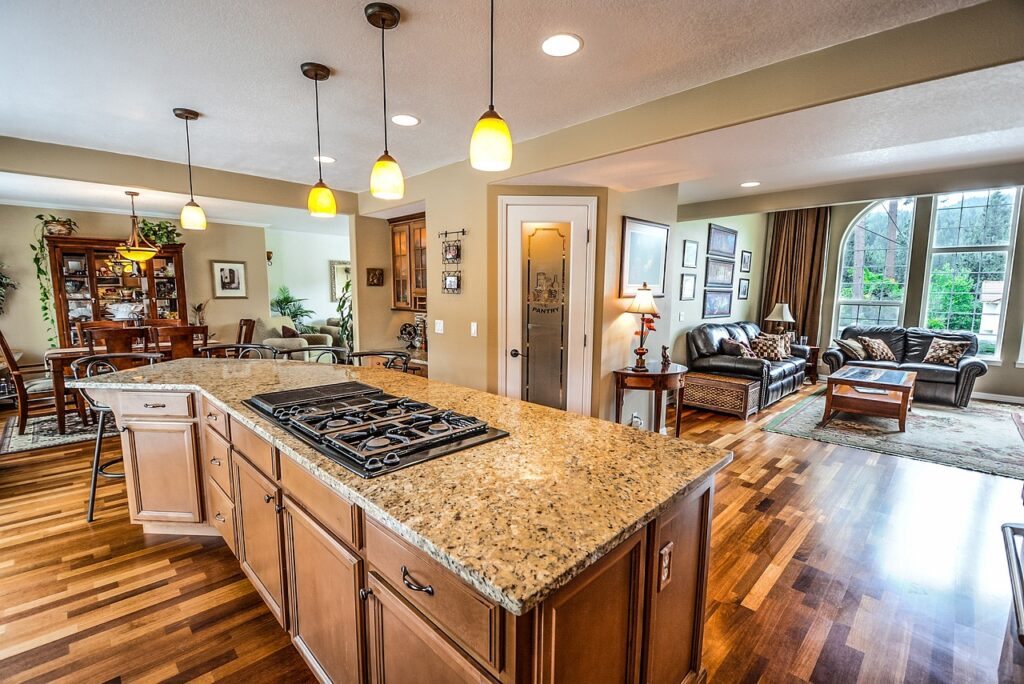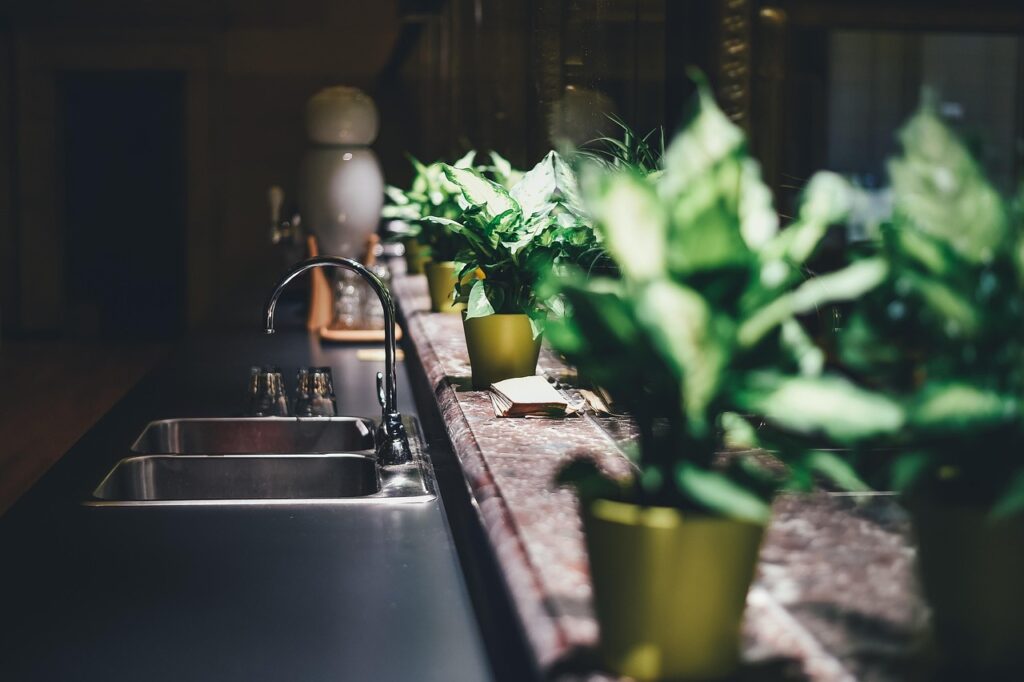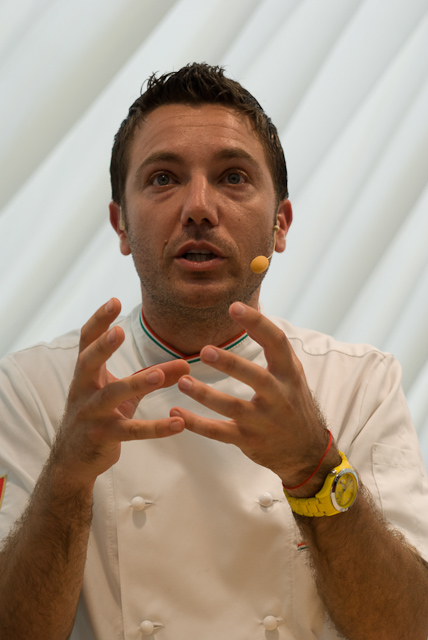
When we think of celebrity chefs, our minds often jump to their incredible recipes or their captivating presence on screen. Yet, their wisdom extends far beyond just cooking techniques. These culinary masters, who have navigated countless professional and stage kitchens, possess an unparalleled understanding of how a kitchen should truly function, whether it’s for a busy restaurant or a cozy home. They apply years of practical experience to design and remodel their own spaces, creating environments that are both highly efficient and enjoyable.
Indeed, the insights gleaned from these food personalities can be incredibly transformative for any home cook looking to elevate their kitchen game. Whether you’re embarking on a full kitchen overhaul or simply seeking a clever storage solution, there are countless design, aesthetic, and organizational tips that have been implemented by the best in the business. These aren’t just high-end, out-of-reach ideas; many are practical, actionable adjustments that can significantly improve your daily cooking experience.
From legendary figures like Ina Garten and Julia Child to modern-day stars such as Giada De Laurentiis and Bobby Flay, these chefs have ‘spilled’ their favorite kitchen design secrets. They demonstrate how strategic planning, smart storage, and thoughtful appliance placement can turn any kitchen into a more functional, aesthetically pleasing, and ultimately, more enjoyable space for culinary creativity. Let’s dive into some of the most impactful rules they enforce in their own home kitchens.
1. **Ina Garten Uses the Triangle Method in Her Own Kitchen**Ina Garten, the beloved cookbook author and Food Network personality, firmly believes that a kitchen’s layout is paramount to its functionality. For her, the “triangle method” is the gold standard for kitchen design. This ingenious principle advocates for positioning the stove, the refrigerator, and the sink in a triangle shape when planning your kitchen layout.
This method is crucial because these three areas are the ones you’ll access most frequently during cooking. By arranging them in a triangular formation, you ensure fluid movement between each station, making it incredibly easy to glide from one task to the next. Keeping these essential appliances in a straight line, conversely, would force you to travel further and hinder quick, efficient movement around your workspace.
Beyond just ease of movement, Garten emphasizes that the triangle method offers another significant benefit: it helps preserve precious counter space. Creating a triangle shape naturally carves out ample room for counters somewhere inside or around this central zone. This thoughtful design means you’ll always have a convenient surface close at hand for prepping ingredients or resting hot pans, never straying far from the action.
Embracing this classic design principle, whether you’re planning a new kitchen or simply reimagining your existing space, can drastically improve your workflow. It transforms your kitchen into a more intuitive and less strenuous environment, proving that even fundamental layout choices can have a profound impact on your daily culinary endeavors.

2. **Julia Child Incorporated a Pegboard for Easy Storage**Julia Child’s kitchen is an icon in its own right, so famous that it now resides in the National Museum of American History. Among its many memorable features is Child’s iconic kitchen pegboard, a testament to practical and versatile storage that was actually created for her by her husband, Paul Child. This cheerful blue pegboard is one of the undisputed highlights of her highly versatile workspace.
Adorned with an enormous collection of copper cookware, various bowls, an array of measuring cups, and a host of other small utensils, Child’s pegboard demonstrates an ingenious way to keep frequently used items visible and within easy reach. It’s a brilliant solution for anyone who struggles with organizing pantry space or simply lacks sufficient storage in their kitchen, making it a must-try approach for home cooks.
The pegboard solution is particularly handy for smaller kitchens, where wall space can be cleverly utilized to double as both storage and decor. You don’t necessarily need a pegboard that spans an entire wall, as Child’s did. You can start small, perhaps by purchasing a simple hanging pegboard online and positioning it near your main workspace.
With a smaller pegboard, you can easily hang up lightweight, frequently used tools like spoons, spatulas, and tongs. Depending on the wall space available, you could even integrate a pegboard directly into your backsplash. The possibilities are truly endless, allowing you to create additional storage space in seemingly thin air, transforming cluttered drawers into accessible displays.
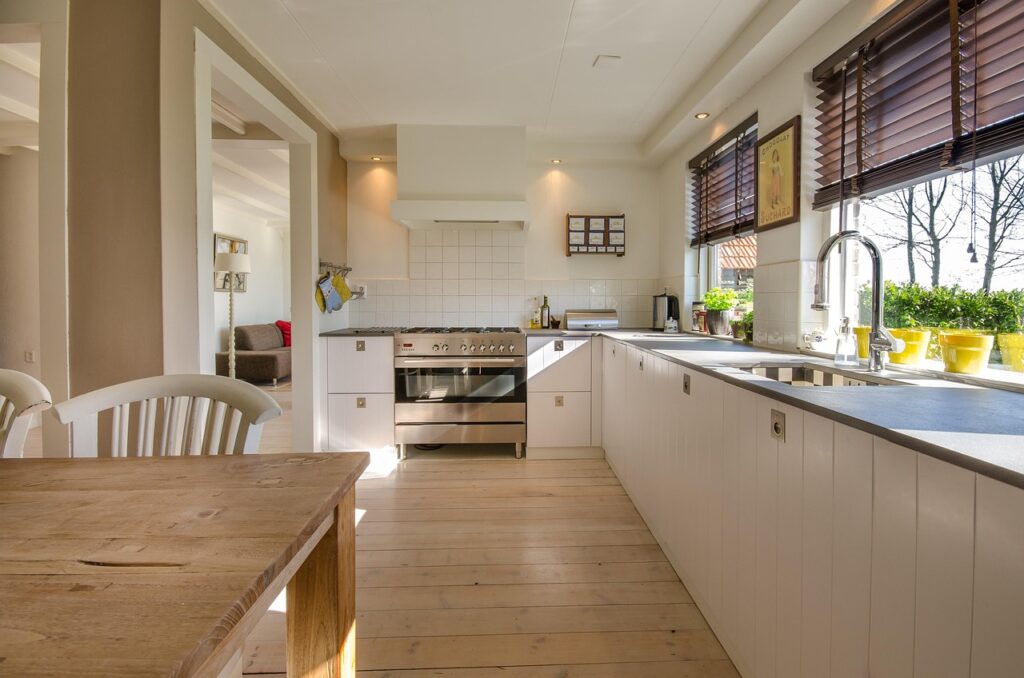
3. **Giada De Laurentiis Uses a Trendy Pot Filler**Giada De Laurentiis is known for her stylish yet practical approach to kitchen design, and a significant part of this aesthetic comes from her choice of a pot filler. The former Food Network chef notably installed a huge, elegant gold pot filler on her backsplash, positioned conveniently above her stovetop. This addition perfectly blends form and function.
Installing a pot filler is a game-changer for home chefs, eliminating the tiresome and often risky task of lugging heavy pots full of water back and forth from the sink to the stove. It makes filling pots much easier and considerably safer, minimizing spills and strain. This convenience is a clear indicator that efficiency and safety are key considerations in a chef’s kitchen.
While the initial investment for a pot filler can range from approximately $1,000 to $3,000 on average, with costs largely depending on whether existing plumbing behind the stove can be utilized for installation, it’s a renovation worth considering. This seemingly minor remodel can even enhance your home’s value by up to 3.2%, making it a smart long-term investment.
If you’re contemplating a major kitchen makeover in the near future, adding a pot filler to your renovation list is highly advisable. It represents a significant upgrade in both convenience and kitchen appeal, reflecting a trend towards integrating practical luxuries that chefs, like De Laurentiis, clearly value in their personal spaces.
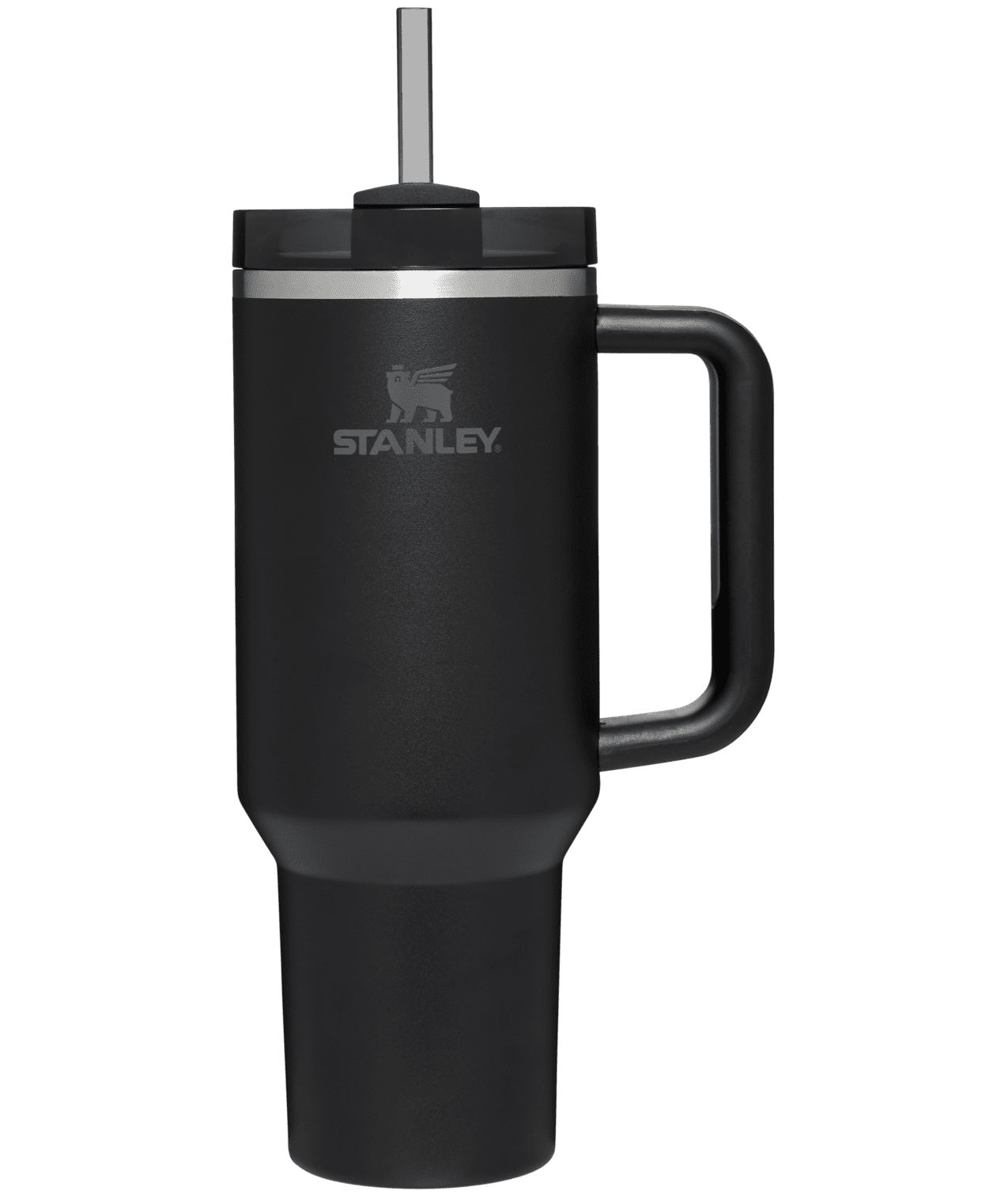
4. **Stanley Tucci Stores Kitchen Tools Above His Stove**Even if he doesn’t claim the title of a professional chef, actor and food show host Stanley Tucci certainly possesses an intuitive understanding of kitchen functionality. If you’re constantly frustrated by the clatter of kitchen utensils rolling around in cluttered drawers, Tucci offers a brilliantly simple and effective hack: organize your kitchen utensils on a bar installed directly above your stove.
This rail, traditionally designed for hanging pots, proves to be a remarkably versatile addition to any kitchen. Tucci ingeniously utilizes S hooks to suspend various items, such as a small strainer, measuring cups, and other petite utensils, keeping them perpetually within arm’s reach. This strategy not only declutters drawers but also makes essential tools immediately accessible when you need them most.
For your own kitchen, consider applying this method to lightweight yet frequently-used items like spoons, spatulas, mugs, whisks, or tongs. You could even explore temporary solutions, such as installing a tension rod between cabinets, if you’re not ready for a permanent fixture. This offers flexibility for renters or those wanting to test the concept before committing.
However, it’s crucial to exercise caution: unless you’re exceptionally confident in the stability of your impermanent kitchen railing, it’s best to hang these items in a location safely away from the direct heat and open flames of the stove. Safety and accessibility go hand-in-hand, even in the simplest of kitchen hacks.

5. **Martha Stewart Divides All of Her Kitchens Into Zones**Martha Stewart, the ultimate authority on gracious living and home efficiency, has famously revealed that all of her kitchens, regardless of their size or location, are meticulously organized into distinct “zones.” This strategic approach is fundamental to her belief in a well-functioning kitchen, ensuring that every area serves a clear purpose and enhances workflow.
According to Stewart, these essential kitchen zones typically include an island, the stovetop area, a dedicated sink space for washing up, and a comfortable seating area. In a practical home kitchen, this might manifest as an island with seating on one side, a sink flanked by ample counter space, and a clearly defined cooking zone around the stovetop. This segmentation provides structure and logic to the entire space.
Adopting this zone-based design principle goes beyond merely understanding how your kitchen should fundamentally operate; it actively guides you in arranging items within each area. For instance, a drying rack, candles, and a shelf of cleaning products should logically reside in the washing-up zone. Stools, serving trays, and decorative elements can be purposefully restricted to the seating area, maintaining order and aesthetic appeal.
Furthermore, the concept of kitchen zones is incredibly helpful when planning your storage solutions. You’ll naturally want to keep spare soap bottles, sponges, garbage bags, and cleaning products conveniently close to your washing-up zone. Similarly, pots and pans are best stored near the stovetop, while hosting supplies and serving dishes would be most accessible near your seating area, making every item’s location intuitive and efficient.
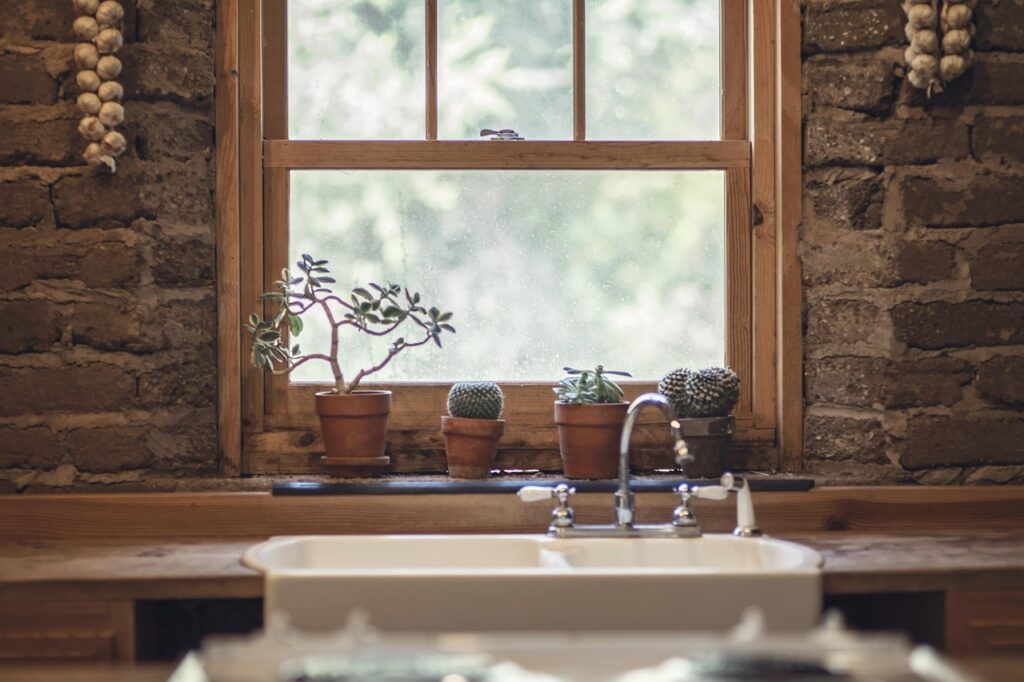
6. **Alex Guarnaschelli Prefers Hidden Outlets**Celebrity chef Alex Guarnaschelli candidly admits to having a multitude of outlets in her kitchen, a necessity in any modern cooking space filled with appliances from stand mixers to blenders. While having abundant, conveniently-located outlets is undeniably practical, the aesthetic clutter they can create is often less than appealing. Guarnaschelli, however, has found elegant solutions by incorporating hidden outlets throughout her kitchen.
One particularly clever example from Guarnaschelli’s kitchen features double outlets cleverly concealed inside her countertop. These innovative outlets remain flush with the counter surface until needed; you simply push down on them, and they gracefully pop out for use. This design provides all the necessary electrical access without sacrificing valuable counter space or disrupting the kitchen’s clean lines.
There are numerous creative ways to hide outlets, ensuring your kitchen functions beautifully without appearing cluttered. You could opt to match your outlet covers to your paint color for a subtly disguised look, allowing them to blend seamlessly into the wall. Another popular solution is to position outlets discreetly underneath your cabinetry, offering easy access for countertop appliances without them being visible at eye level.
Hiding your outlets opens up a world of possibilities for creating functional and aesthetically pleasing workspaces within your kitchen. It allows you to utilize areas where you might normally hesitate to place an appliance due to a visible or inconveniently located outlet, thereby maximizing both practicality and visual harmony in your culinary domain.
7. **Bobby Flay’s Kitchen Island is Multifunctional**For a bustling chef like Bobby Flay, it’s only logical that his kitchen island serves multiple purposes, embodying versatility and efficiency. This adaptable approach to a central kitchen feature is something that any home cook can readily incorporate into their own space, regardless of its size. Flay’s strategy transforms the island from a singular fixture into a dynamic hub of activity.
Essentially, Flay masterfully uses his kitchen island as a primary workspace when he’s deep in the throes of cooking. Yet, its utility extends far beyond mere prep. He seamlessly transitions it into a comfortable area for seating and casual eating, perfect for quick breakfasts or informal meals. When entertaining guests, the island elegantly shifts roles once more, becoming an ideal serving station for dishes and drinks.
Making your island function as both a workspace and a serving area largely hinges on how you consciously decide to utilize its countertop. However, integrating a dedicated seating area is a key way to dramatically enhance your island’s utility without incurring significant additional expenses. It encourages social interaction and provides a relaxed dining spot.
Flay’s home kitchen in New York City features a large island specifically designed with ample empty space underneath, perfectly accommodating a collection of barstools. If you frequently host, you might even consider an island extension that allows for discreet seating storage. Alternatively, simply adding a few stylish barstools to one side of your existing island, or keeping folding stools nearby in a pantry, offers a flexible solution to use your island as a convivial hosting space whenever the occasion arises.
Beyond the foundational elements, these culinary titans also champion advanced organizational tactics and specific cooking techniques that can profoundly elevate your everyday meals. Their wisdom isn’t just about what looks good, but what truly makes a kitchen a powerhouse of efficiency and flavor. Let’s delve into the next set of invaluable rules that will transform your culinary journey.
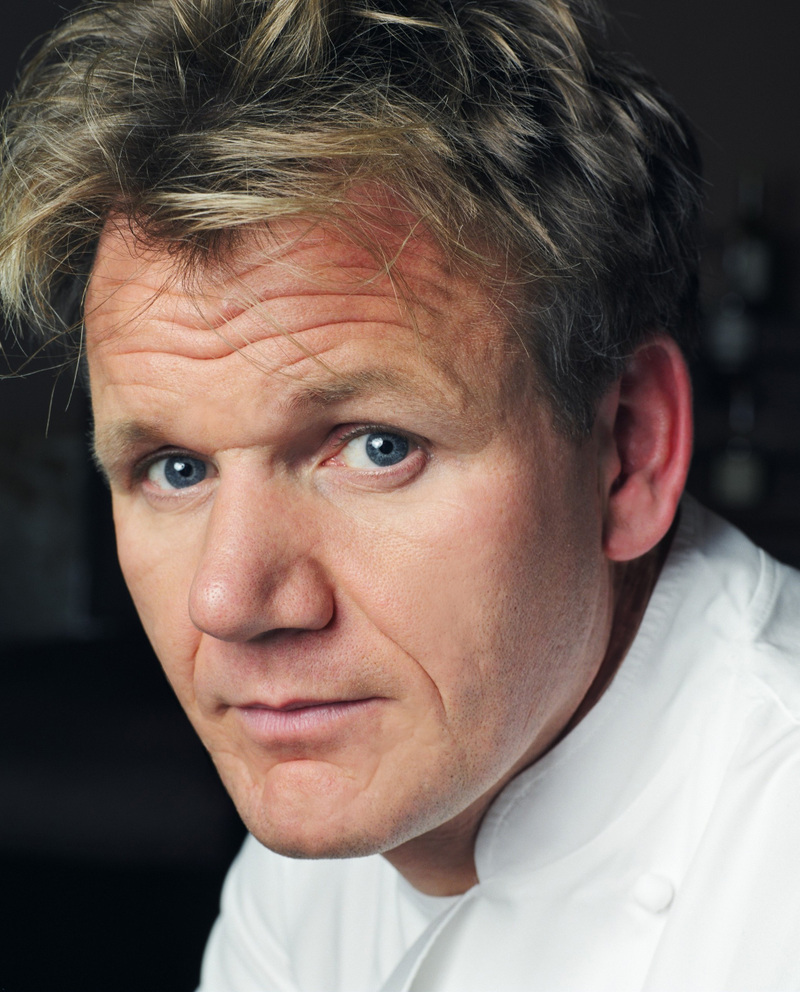
8. **Gordon Ramsay is All About Adding Prep Space, Even to Small Spaces**Ask any chef, and they’ll tell you that having ample prep space is arguably one of the most critical elements in a functional kitchen. It’s the battlefield where ingredients are transformed, and without sufficient room, cooking can quickly become a frustrating juggling act. Gordon Ramsay, ever the pragmatist, understands this deeply, recognizing that a large workspace makes cooking infinitely easier.
But what if your kitchen is on the smaller side, seemingly devoid of generous counter space? Ramsay has a genius solution. When renovating the kitchen of his group executive chef, he introduced an extending countertop. This clever feature is a game-changer for those with compact kitchens who might have a little extra central space for a pullout counter, offering precious room exactly when needed.
For an even more accessible and smaller-scale renovation, you can draw inspiration from Ramsay by installing a pull-out cutting board. This simple addition instantly expands your usable prep area, allowing you to chop, slice, and dice with ease, even in a kitchen that feels too snug for extensive permanent counters. It’s about maximizing every inch to enhance your workflow.
These practical additions empower you to tackle more ambitious recipes and manage multiple ingredients simultaneously, reducing stress and increasing your enjoyment in the kitchen. Even a few extra square inches dedicated to prep can make a monumental difference, proving that thoughtful design isn’t just for sprawling professional kitchens.
Read more about: The Future is Flavorful: 14 Cutting-Edge Food Trends Set to Dominate Your Plate in 2025

9. **Jamie Oliver Says That a Large Freezer is a Must-Have**For Jamie Oliver, whose culinary passion often revolves around helping busy families eat healthier, a chest freezer isn’t just a convenience; it’s a secret weapon for smarter cooking and saving money. He firmly believes that having a generously sized freezer at home is an absolute necessity for modern life.
Oliver explains that big freezers enable people to batch-cook meals rather than preparing single portions every night. This approach is a lifesaver for busy households, allowing them to meal prep for the entire week ahead. Imagine having delicious, homemade meals ready to go, saving precious time on hectic evenings while still enjoying wholesome food.
Beyond meal prepping, a large freezer opens up incredible opportunities for bulk buying and significant financial savings. Oliver cites meat as a prime example: instead of consistently purchasing individual portions from the grocery store at higher prices, you can buy whole animals or larger quantities of meat locally. Storing these in your freezer will prove much cheaper in the long run.
Even if you’re working with a smaller freezer, you can still embrace Oliver’s philosophy with some clever organization. Stacking shelves, snap-together containers, and vacuum-sealed bags can dramatically enhance your existing freezer’s capacity. These simple tools help you store more efficiently, ensuring you always have room for your bulk purchases and pre-planned meals.

10. **Daniel Boulud Keeps His Kitchen Organized with Hidden Storage**Daniel Boulud approaches kitchen design not just as an art, but as an exercise in engineering. For this renowned chef, every detail in his home kitchen is meticulously crafted for practicality and unparalleled efficiency, especially when it comes to keeping his workspace clear and clutter-free. He understands that a clear counter equals a clear mind and more room to create.
Boulud strongly advises home cooks to integrate clever storage solutions into their cabinetry, specifically recommending pullouts and lazy Susans. These ingenious additions help you store kitchen tools and small appliances far more efficiently, transforming chaotic cupboards into orderly spaces. The result? More precious countertop real estate becomes available for actual cooking and prep.
Furthermore, Boulud champions the use of drawer fittings to optimize storage even further, allowing for a place for everything and everything in its place. His ultimate goal is to keep absolutely everything—including appliances like toasters or blenders—off his countertops when not actively in use. This commitment to clear surfaces maximizes working space and eliminates visual clutter.
If you aspire to a completely practical and clutter-free kitchen like Boulud’s, you’ll need functional storage solutions that go beyond simply shoving items into a cupboard randomly. Consider investing in appliance garages to hide bulkier items, corner drawers that utilize otherwise dead space, and pullout shelves that bring contents to you. These thoughtful additions empower you to create a serene and highly efficient culinary domain.

11. **Mise En Place for Seamless Cooking**While this French phrase might sound sophisticated, its translation is beautifully simple and incredibly powerful: “put in place.” Mise en place, often abbreviated by professional chefs as MEP or simply mise, is the practice of doing all your necessary ingredient preparation ahead of time. This includes everything from washing and measuring to meticulously chopping every component before you even begin to cook.
Pastry chef and founder of Squish Marshmallows, Katherine Sprung, highlights the profound impact of this technique. She emphasizes that mise en place “helps make sure that you don’t forget about adding any crucial ingredients, and also helps your flow so that you’re not stopping to grab something and scale it out in the middle of things.” It creates a rhythm and reduces stress in the kitchen.
Donatella Arpaia, a celebrity chef and restaurateur, takes this concept even further, advocating that mise en place should extend beyond just the recipe ingredients to encompass your entire kitchen. A clean, organized kitchen, refrigerator, and pantry, she argues, are fundamental. This holistic approach “will set you up for an easier, more enjoyable cooking experience,” transforming your kitchen into a haven of efficiency.
Embracing mise en place is one of the easiest yet most impactful ways for any home cook to elevate their game and approach cooking like a professional. It’s a fundamental habit that empowers you to cook with confidence, precision, and enjoyment, making every meal preparation a smooth and rewarding experience.
Read more about: Your Chef’s Knife is Irreplaceable: 8 Critical Signs It’s Time for a Smart Upgrade
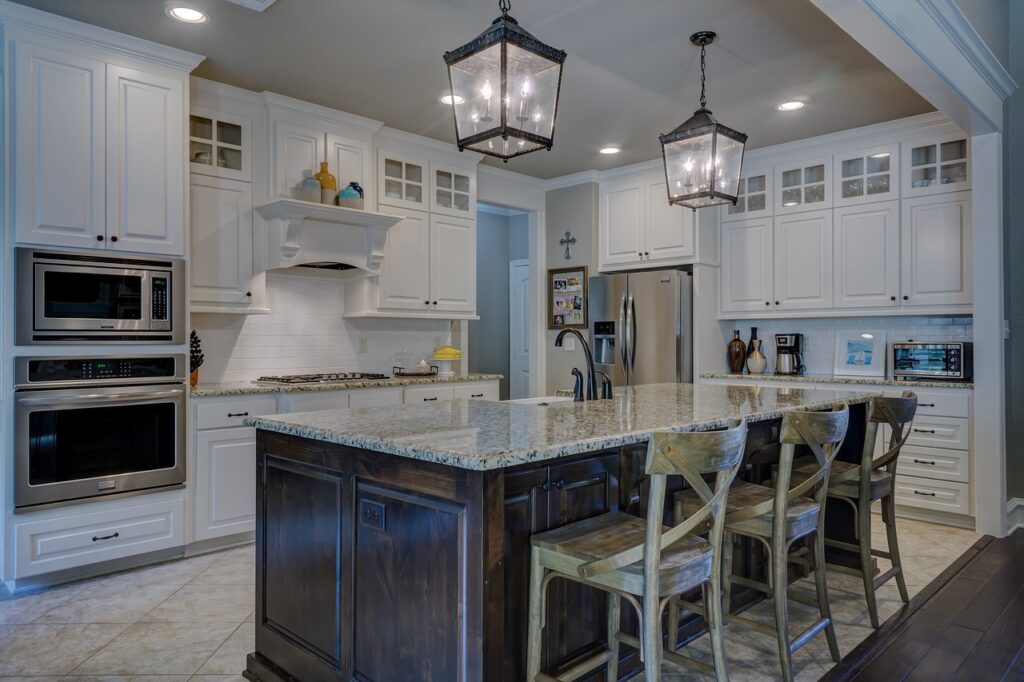
12. **First In, First Out (FIFO) for Smart Ingredient Management**Step into virtually any well-run professional kitchen—definitely not one featured on a certain TV show about kitchen nightmares—and you’ll find a team living by a firm, unwavering rule: First In, First Out, or FIFO. This principle is all about smart inventory management, ensuring that older ingredients are always used up before newer ones, minimizing waste and maximizing freshness.
Chef Abishek Sharma, of Madam Ji, strongly recommends “labeling to clearly date leftovers and pantry items for easy tracking of how old they are.” This simple act of putting a date on everything from opened sauces to stored leftovers ensures you know exactly what needs to be consumed first. No more guessing games or mysterious containers lurking at the back of the fridge.
The beauty of implementing FIFO in your home kitchen is multifaceted. Firstly, it drastically reduces food waste, preventing perfectly good ingredients from spoiling unnoticed. Secondly, and perhaps most appealingly for the savvy home economist, it helps you save money at the supermarket. By utilizing what you already have, you’ll make smarter shopping decisions and avoid unnecessary purchases.
Adopting FIFO is a practical, actionable strategy that empowers you to manage your ingredients like a pro, keeping your pantry and refrigerator streamlined and efficient. It’s a small change with a big impact, translating to fresher meals, less waste, and more money staying in your wallet.
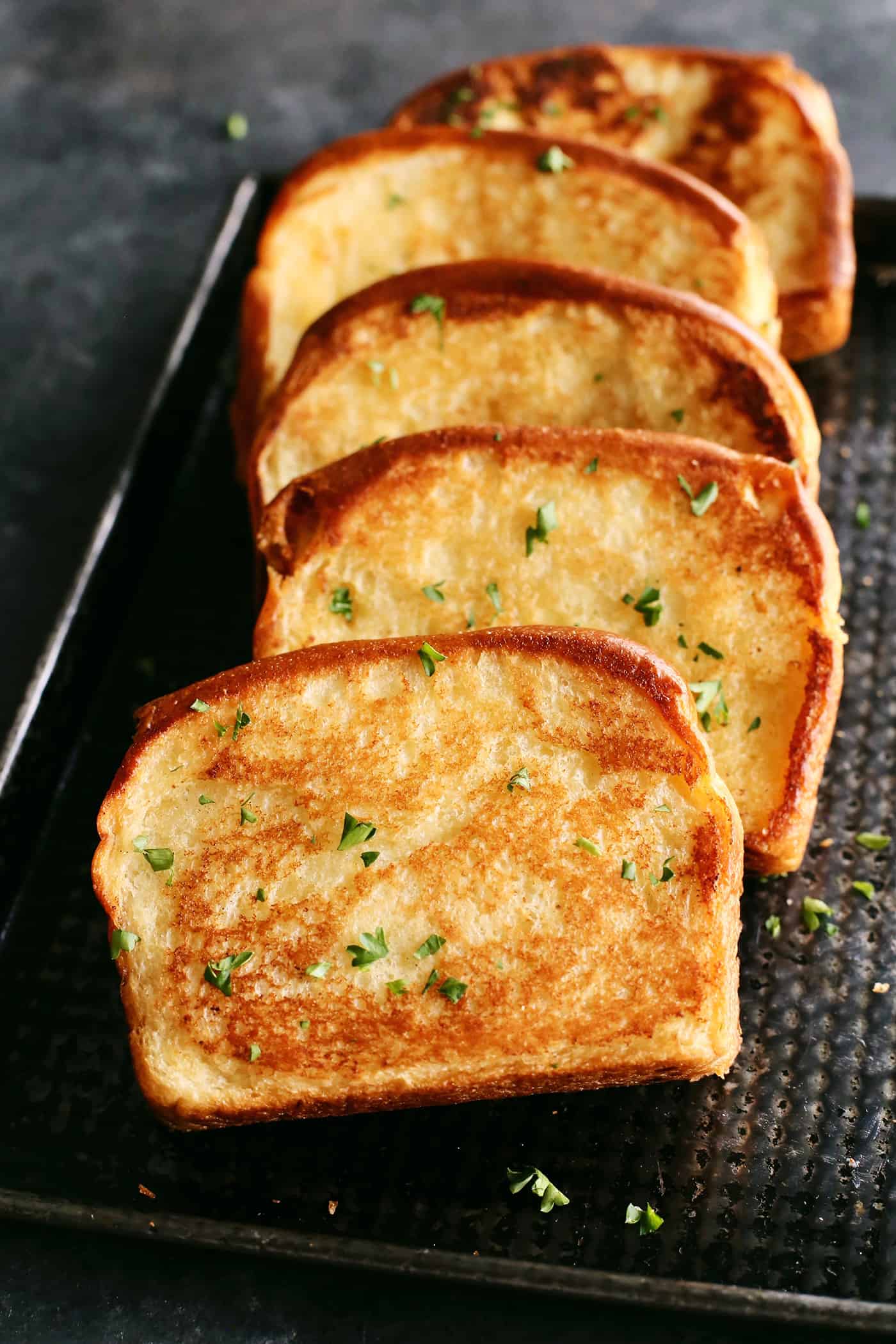
13. **Toast Your Spices for Deeper Flavors**Have you ever crafted a stew or chili, only to feel that it lacked a certain depth, tasting a bit dull despite all your efforts? This common culinary conundrum has a surprisingly simple, yet incredibly effective, solution that professional chefs swear by: toasting your spices. It’s a game-changer for unlocking hidden flavor dimensions.
Chef Abishek Sharma explains that when you gently heat spices in a pan with a little oil or butter, it doesn’t just warm them up; it “blooms” them. This process infuses the fat with their aromatic compounds, bringing out significantly more “depth of flavor.” Imagine drawing out the very essence of each spice, making its contribution to your dish far more potent and complex.
From that point, the seasonings will taste remarkably more prominent and layered than if you were to simply sprinkle them directly into your dish without this crucial step. Whether you’re working with whole spices like cumin seeds or ground spices like paprika, a quick toast can awaken their full potential, transforming a good dish into an unforgettable one.
This simple, low-effort technique is an absolute must-try for any home cook looking to inject maximum flavor into their cooking. It’s an empowering trick that makes your spices work harder for you, ensuring every bite is rich with vibrant, aromatic taste. Don’t skip this easy step, and watch your culinary creations truly shine.

Morning Glory Muffins
Ingredients
Equipment
Method
- Preheat your oven to 375°F (190°C) and lightly grease or line a 12-cup muffin pan.
- In a large mixing bowl, whisk together the all-purpose flour, whole wheat flour, cinnamon, baking powder, baking soda, and kosher salt until well combined.
- In a separate medium mixing bowl, whisk together the eggs, granulated sugar, light brown sugar, neutral oil, and vanilla extract until thoroughly blended.
- Pour the wet ingredients into the dry ingredients, stirring gently with a rubber spatula until just combined. Be careful not to overmix; some lumps are fine.
- Gently fold in the thoroughly drained and squeezed crushed pineapple, shredded carrot, shredded Granny Smith apple, golden raisins, sweetened coconut flakes, and coarsely chopped toasted pecans until evenly distributed.
- Divide the batter evenly among the prepared muffin cups, filling each about two-thirds full.
- Bake for 20–25 minutes, or until the muffins are golden brown and a wooden skewer inserted into the center comes out clean.
- Let the muffins cool in the pan for 5 minutes before carefully transferring them to a wire rack to cool completely.
Notes
Read more about: Beyond the Fries: 15 Mind-Blowing Dishes You Won’t Believe Your Air Fryer Can Make!
And there you have it – a treasure trove of kitchen wisdom, straight from the maestros themselves! These invaluable insights from celebrity chefs, spanning advanced organizational hacks to fundamental cooking techniques, are designed to empower you, the home cook, to create a kitchen that is both a haven of efficiency and a stage for culinary excellence. No longer just a functional space, your kitchen can become a dynamic hub where delicious meals come to life with less fuss and more flavor. So, go ahead, pick one, try it out, and watch your cooking game reach new, exciting heights. Your inner chef is waiting to be unleashed!

